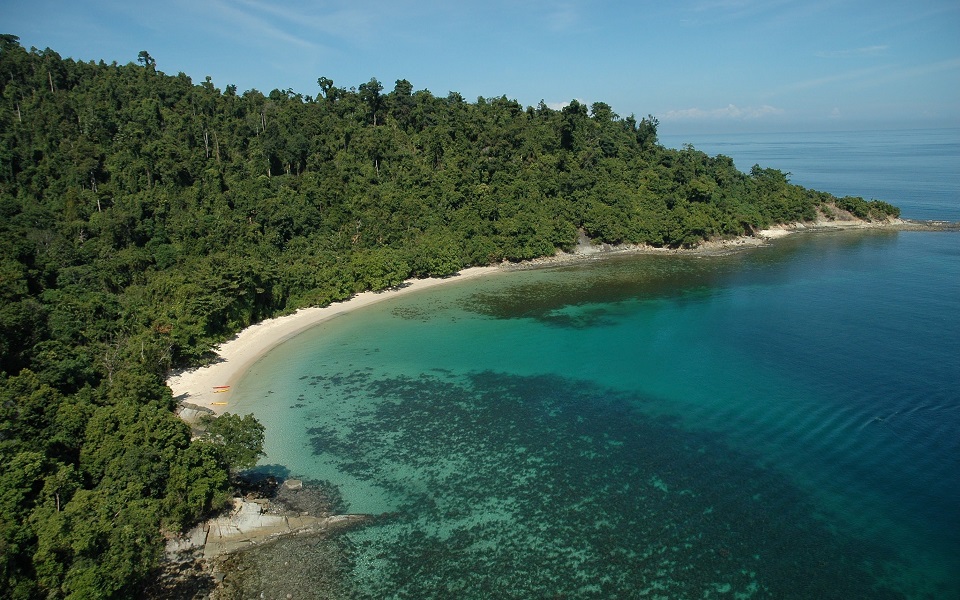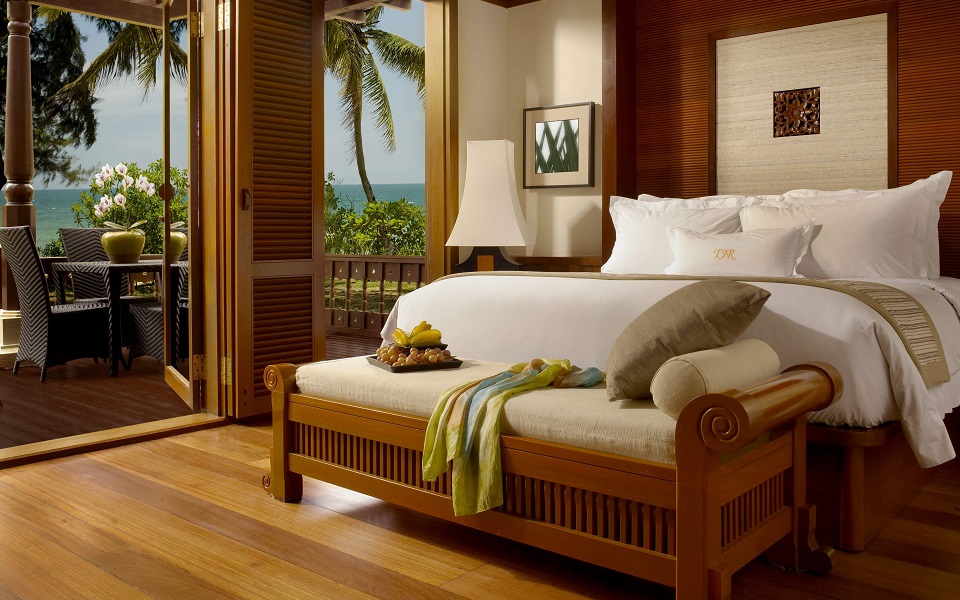Trekking Malaysia, from jungle to sea

I stand, deep in the rainforest, and listen. Life is pulsating, filling the hot and humid air. It is pervasive, all encompassing, and almost suffocating. The leaf litter beneath my feet moves a little. It feels primeval. It is primeval: these forests in Malaysia are over 130 million years old. The air is filled with the constant hum and buzz of insects and tree frogs, and piercing, shrill clicks which crescendo as cicadas flex their muscles. In every crevice of a tree a scorpion hides, or a tarantula waits. In the branches, a monitor lizard lies prostrate.
Here in the Danum Valley Conservation Area, a 438 sq km parcel of protected land on the island of Borneo, I am dwarfed by huge buttress roots at the foot of a smooth, straight trunk which soars over 90 metres high. I can’t even see the point here it emerges from the canopy. There’s a cacophony of bird song, the eerie calling of gibbons, and a crashing sound as macaques and proboscis monkeys leap and fall through the branches. Suddenly, though, there is the call I have been waiting for: a harsh, deep croaking sound. It is the elusive rhinoceros hornbill, one of the largest birds in Asian rainforests – and definitely one of the most impressive. I’ve been tracking the hornbill for an hour, and finally I’m rewarded for my patience. An adult female with her distinctive red horn alights in a tree just ahead of me and proceeds to feed her baby, one so small that he is yet to develop his horn. I creep closer and watch spellbound as she bends her long neck down to the youngster. He stretches up eagerly and grabs the food.

The mother was feeding, tearing handfuls of leaves with her teeth. Her baby, already replete and bored of sitting still, was turning somersaults, flexing his long arms as he explored nearby branches. These endangered creatures were silent, the mother watchful. She knew we were near, but there was enough distance; she felt safe in the confines of her tree. She would not come down to the ground, for fear of predators. It’s far better to escape through the dense branches of an adjacent tree.
These rainforests are the lungs of Malaysia. I crossed a narrow creek, its sluggish brown water creeping between boulders where lizards lazed in patches of sunlight, and then crossed a swaying rope bridge to go deeper into the jungle I was spending four days immersed within. The guide stopped me with a sudden hand gesture and motioned towards a tree where he had seen movement. A mother and baby orangutan emerged from their nest: it’s not only the birds who nest amongst the branches of the trees.
Traveling by boat to inaccessible villages, devoid of roads and even electricity, I experienced the magic of absolute darkness. Crocodiles lay perfectly camouflaged, partly submerged in the mud, eyes hooded, just waiting to strike an unsuspecting monkey or a village child bathing in the river. Herds of elephants came down to the water to drink, making use of the wildlife corridor sandwiched between forest and oil palm plantations. Like so many other places in Malaysia, this natural forest has to fight for survival with the encroachment of rubber plantations. Only in this part of northeast Borneo I have some hope for its future. I accompanied a local eco-village guide to plant trees, joining a group of young volunteers.

We first had to clear the tangled undergrowth; a back-breaking job in this heat and humidity. In these conditions, the locally grown saplings can grow to 20 meters in three years. The project, which is a community initiative, protects this precious environment, provides work for local villagers, and is an extraordinary educational opportunity for travelers who want to learn about the rainforest and understand why its rapid disappearance from our planet is of such concern. The rainforest of Borneo’s interior is under threat, but so too are the coastal ecosystems around the island’s fringe. I traveled by boat to Gaya Island, a short distance off Borneo’s northern shore, not far from the regional capital of Kota Kina balu. This is where the jungle gives way to mangrove swamps and beach.
The staff at Gaya Island Resort where I stayed for two nights understand that their environment is fragile, and consequently sustainability has to go hand in hand with luxury. I took a guided walk with a local naturalist to learn how native people use Malaysia’s endemic plants for food and medicine, and which plants contain water. It’s an important thing to know if you are ever Iost in the jungle. The land here is immensely fertile, as is attested to by the volume, variety, and freshness of produce in the nearby market. Here, though, it is the water not the land which is the primary draw. I tested my balance paddle boarding in a shallow bay, and took to a kayak to explore the mangroves.

The world’s mangroves — threatened by climate change as well as coastal development — annually sequester some 24 million metric tonnes of carbon in the soil, so preserving them is arguably even more important than the protection of the rainforest. There’s opportunity, too, to snorkel beneath the waves in crystal clear waters alongside hawksbill turtles and a myriad of coloured fish. Gaya Island’s snorkelling guide showed me grey tipped sharks gliding through coral gardens. There are corals of every shape, size, and colour, and miraculously they are thus far largely free from the effects of bleaching. I gazed in amazement at the huge, vivid blue clam which seemed to breathe with the moving current.
Back ashore, I met more young volunteers who are working with a turtle protection charity, and was thrilled to watch as tiny, newly hatched turtles made their frantic scramble for the sea under a starry sky. Malaysia has an enviable biodiversity, but I became acutely aware travelling through Borneo that it is under threat. The government has a role to play in its protection, and so do local communities, tourists, and consumers worldwide.
The biggest challenge is palm oil. Together, Malaysia and Indonesia produce 85% of the world’s output. It is used in everything from food products to cosmetics, not to mention biofuels. Oil palms are highly productive, harvested for 12 months of the year, and require only one tenth of the land needed for other oil producing crops. But this development drives deforestation, destroying the habitat of already endangered species. The loss of forest and the conversion of carbon rich peat soils throw millions of tonnes of greenhouse gases into the atmosphere, contributing to climate change. Unrestricted plantations have replaced rainforests, scarring the landscape; and the indiscriminate use of fertilisers causes run-off into rivers, which poisons fish and decimates the way of life of fishermen.
Developing awareness of Malaysia’s vulnerability and supporting those whose mission it is to build an ecologically sustainable environment must be the first step to saving these special wild places for the future. Responsible tourism has a critical role to play – thank goodness being responsible can be this rewarding.
Do it yourself
Nightly rates at the YTL Gaya Island Resort start from £270. Enquire for prices at the Danumvalley.rainforestlodge.com. Singapore Airlines fly to Brunei from around £1,400